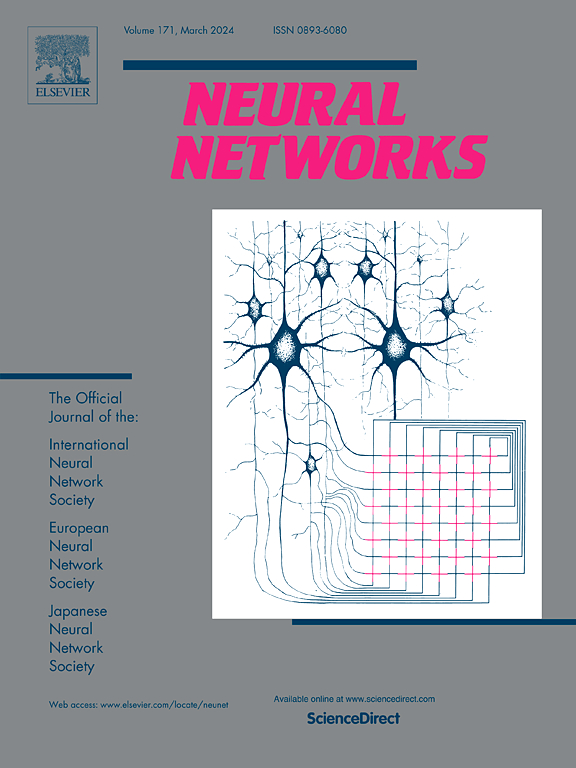自适应感受野图神经网络
IF 6
1区 计算机科学
Q1 COMPUTER SCIENCE, ARTIFICIAL INTELLIGENCE
引用次数: 0
摘要
近年来,图神经网络(GNNs)越来越受到人们的关注,并在许多场景和任务中取得了显著的成功。然而,现有的方法表明,随着gnn的加深,表示学习的性能急剧下降,这归因于过度平滑表示。为了解决上述问题,我们提出了一种自适应接受野图神经网络(ADRP-GNN),该网络通过单层图卷积层自适应扩展接受野来聚合信息,避免了加深导致的过度平滑问题。具体而言,我们首先提出了一种多跳图卷积网络(MuGC),该网络仅用一层捕获节点及其多跳邻居的信息,防止了节点之间频繁传递消息的过度平滑问题。然后,我们设计了一个元学习器,实现了每个节点的自适应接受场来选择相关的邻居信息。最后,采用骨干网增强体系结构的学习能力。此外,我们的架构自适应地生成接受场,而不是手工制作堆叠层,这可以集成现有的GNN框架以适应各种场景。大量的实验表明,我们的架构对过度平滑问题是有效的,在8个数据集的节点分类任务上,与目前最先进的方法相比,准确率提高了0.52%至6.88%。本文章由计算机程序翻译,如有差异,请以英文原文为准。
Adaptive receptive field graph neural networks
Graph Neural Networks (GNNs) have drawn increasing attention in recent years and achieved outstanding success in many scenarios and tasks. However, existing methods indicate that the performance of representation learning drops dramatically as GNNs deepen, which is attributed to over-smoothing representation. To handle the above issue, we propose an adaptive receptive field graph neural network (ADRP-GNN) that aggregates information by adaptively expanding receptive fields with a monolayer graph convolution layer, avoiding deepening to result in the over-smoothing issue. Specifically, we first present a Multi-hop Graph Convolution Network (MuGC) that captures the information of the nodes and their multi-hop neighbors with only one layer, preventing frequent passing messages between nodes from the over-smoothing issue. Then, we design a Meta Learner that realizes the adaptive receptive field for each node to select related neighbor information. Finally, a Backbone Network is employed to enhance the architecture’s learning ability. In addition, our architecture adaptively generates receptive fields instead of handcrafting stacked layers, which can integrate existing GNN frameworks to fit various scenarios. Extensive experiments indicate that our architecture is effective for the over-smoothing issue and improves accuracy by 0.52% to 6.88% compared to state-of-the-art methods on node classification tasks on eight datasets.
求助全文
通过发布文献求助,成功后即可免费获取论文全文。
去求助
来源期刊

Neural Networks
工程技术-计算机:人工智能
CiteScore
13.90
自引率
7.70%
发文量
425
审稿时长
67 days
期刊介绍:
Neural Networks is a platform that aims to foster an international community of scholars and practitioners interested in neural networks, deep learning, and other approaches to artificial intelligence and machine learning. Our journal invites submissions covering various aspects of neural networks research, from computational neuroscience and cognitive modeling to mathematical analyses and engineering applications. By providing a forum for interdisciplinary discussions between biology and technology, we aim to encourage the development of biologically-inspired artificial intelligence.
 求助内容:
求助内容: 应助结果提醒方式:
应助结果提醒方式:


